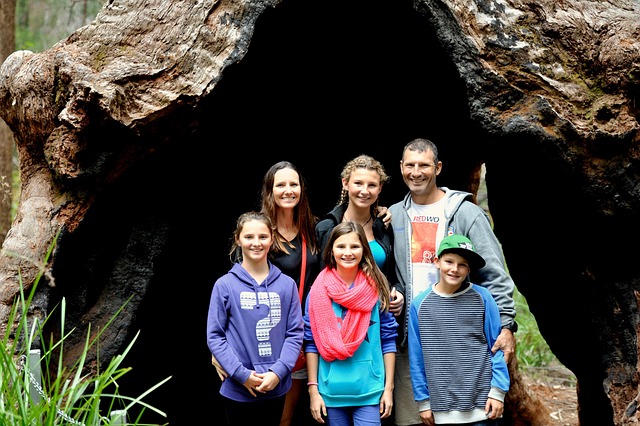When divorcing or separating, prioritizing the emotional well-being of children involves understanding legal rights and flexible custody arrangements. Co-parenting strategies like shared or joint custody ensure consistent routines. Shared custody tips emphasize structured parenting plans, joint decision-making, and open communication. Effective co-parenting communication through conflict resolution techniques and custody mediation minimizes disputes, fostering a cooperative environment. Joint custody guidelines and parenting plans after divorce tailored to individual needs promote the child's healthy development while preserving parental rights.
Navigating custody and co-parenting challenges can be a complex and emotional process. This comprehensive guide offers expert advice to help families manage these complexities effectively. From understanding legal rights and options regarding custody arrangements, including sole, joint, shared, and their implications, to implementing strategies for open communication and creating consistent routines, we explore every facet of successful co-parenting.
We delve into practical tips for shared custody, structured schedules, and conflict resolution techniques using nonviolent communication and mediation. Armed with these insights, parents can forge positive parenting plans that prioritize the best interests of their children while fostering a supportive environment post-divorce.
Understanding Custody Arrangements: Legal Rights and Options
When navigating custody arrangements following a divorce or separation, it’s crucial to understand both your legal rights and the available options. The goal is often to establish effective co-parenting strategies that put the child’s emotional well-being first. This might involve shared custody tips where both parents have significant time with the child, or joint custody guidelines where decision-making power is shared. Parenting plans after divorce should be tailored to meet the unique needs of the family, while ensuring effective co-parenting communication.
Custody mediation tips can help resolve conflicts and facilitate open dialogue between parents. By focusing on conflict resolution in co-parenting, you can create a healthier environment for your child. Remember, joint custody isn’t always possible or ideal; the key is to find an arrangement that minimises disruption in the child’s life while fostering positive relationships with both parents.
– Definition of custody arrangements
Custody arrangements refer to the legal and physical decisions made regarding a child’s care after a divorce or separation. These arrangements encompass various aspects, including visitation rights, parenting time, and the primary residence of the minor. Effective co-parenting strategies are crucial in ensuring a stable and nurturing environment for the child, regardless of which parent they are with. Shared custody tips encourage joint decision-making and open communication to establish consistent routines and rules, fostering a sense of security and stability for the child.
Parenting plans after divorce often involve complex negotiations, especially when determining child custody rights. Joint custody guidelines provide a framework that considers the best interests of the child, promoting equal time with both parents if feasible. Conflict resolution in co-parenting is essential to navigate differences and maintain a cooperative relationship. Custody mediation tips can facilitate open dialogue, helping parents communicate more effectively and minimize disputes, thereby prioritizing their child’s well-being.
– Types of custody: Sole, joint, shared, and their implications
After a divorce or separation, determining child custody arrangements is one of the most significant decisions parents will make. Understanding the various types of custody can help facilitate effective co-parenting strategies. Sole custody grants a single parent legal and physical decision-making authority over the child. This setup might be suitable when a parent can provide a stable home environment consistently. On the other hand, joint custody involves both parents sharing legal responsibility and often physical time with the child. Shared custody tips recommend creating a structured parenting plan that ensures equal or nearly equal time for each parent.
When considering joint custody guidelines, it’s crucial to prioritize the child’s best interests. Effective co-parenting communication becomes vital to navigate conflicts and make decisions collaboratively. Conflict resolution in co-parenting often involves setting clear boundaries, establishing consistent routines, and utilizing custody mediation tips to resolve disagreements peacefully. The goal is to foster a cooperative environment that minimizes disruption in the child’s life. Additionally, parenting plans after divorce should be flexible and adaptable to accommodate changing circumstances while ensuring the child retains a sense of stability and security.
– How to determine the best arrangement for the family
Determining the best custody arrangement for a family involves a combination of practical considerations and emotional intelligence. Parents must prioritize their child’s well-being, taking into account factors like the child’s age, developmental needs, and existing relationships with each parent. Shared or joint custody arrangements are increasingly common, reflecting a desire for continuity and stability in a child’s life post-divorce or separation. However, these plans require robust co-parenting strategies to navigate scheduling, decision-making, and potential conflicts effectively.
Effective communication is key among co-parents; open dialogue allows them to agree on parenting plans, resolve conflicts amicably, and share crucial information about the child’s progress and needs. Custody mediation can also play a significant role in facilitating these conversations, providing a neutral space to discuss and negotiate arrangements that promote healthy development and minimize stress for everyone involved. Following joint custody guidelines ensures a structured approach to sharing responsibilities, preserving each parent’s rights while fostering a cooperative environment for co-parenting success.
Navigating the complexities of custody and co-parenting is a delicate process that requires understanding and collaboration. By implementing effective co-parenting strategies, such as open communication, shared custody tips, and conflict resolution techniques, former partners can create a harmonious environment for their children. Joint custody guidelines and mediation tips play a pivotal role in ensuring fairness and minimizing disruption during this transition. Remember that the best parenting plans after divorce are those forged through mutual respect and a commitment to the child’s well-being, fostering a stable and loving home environment despite the change in family dynamics.
